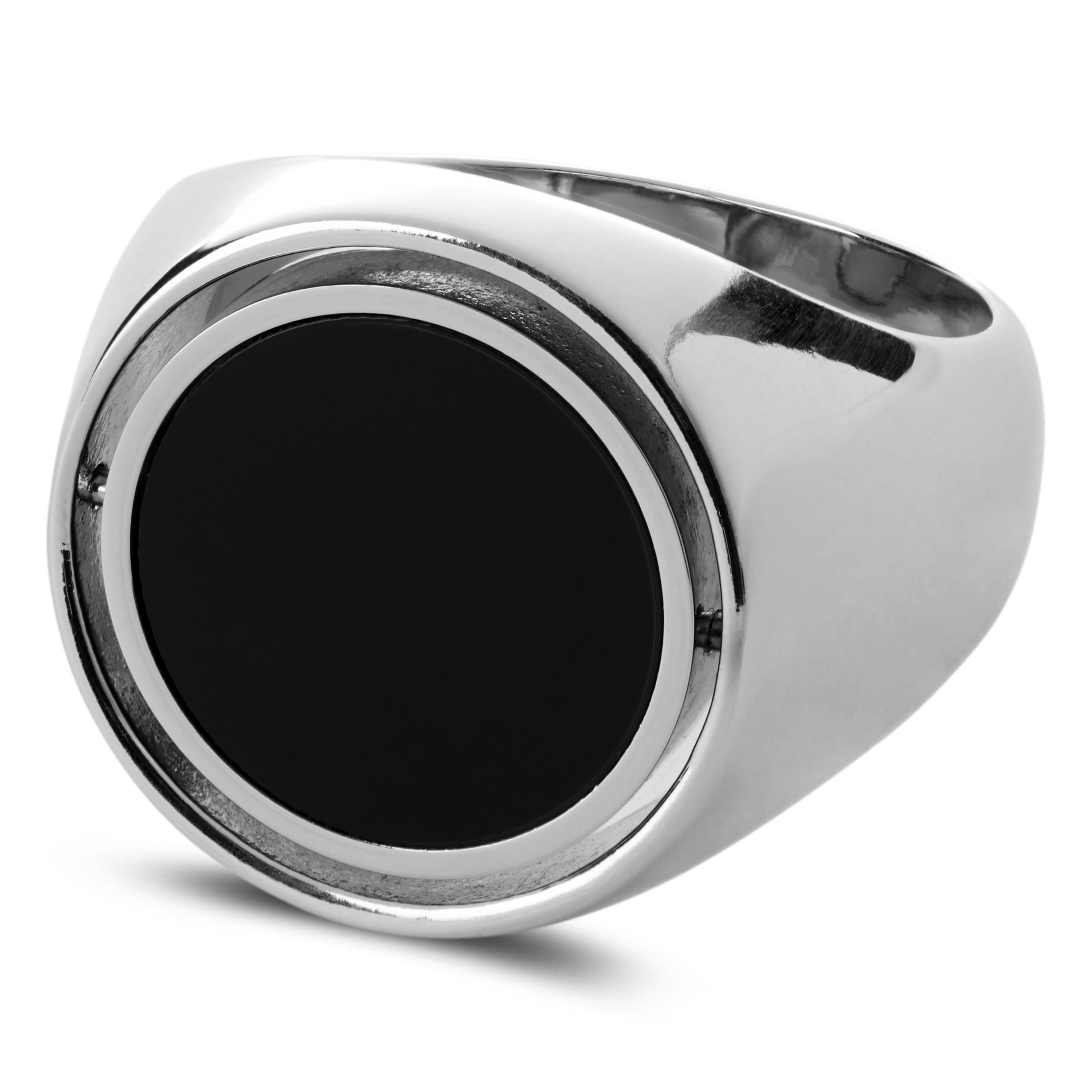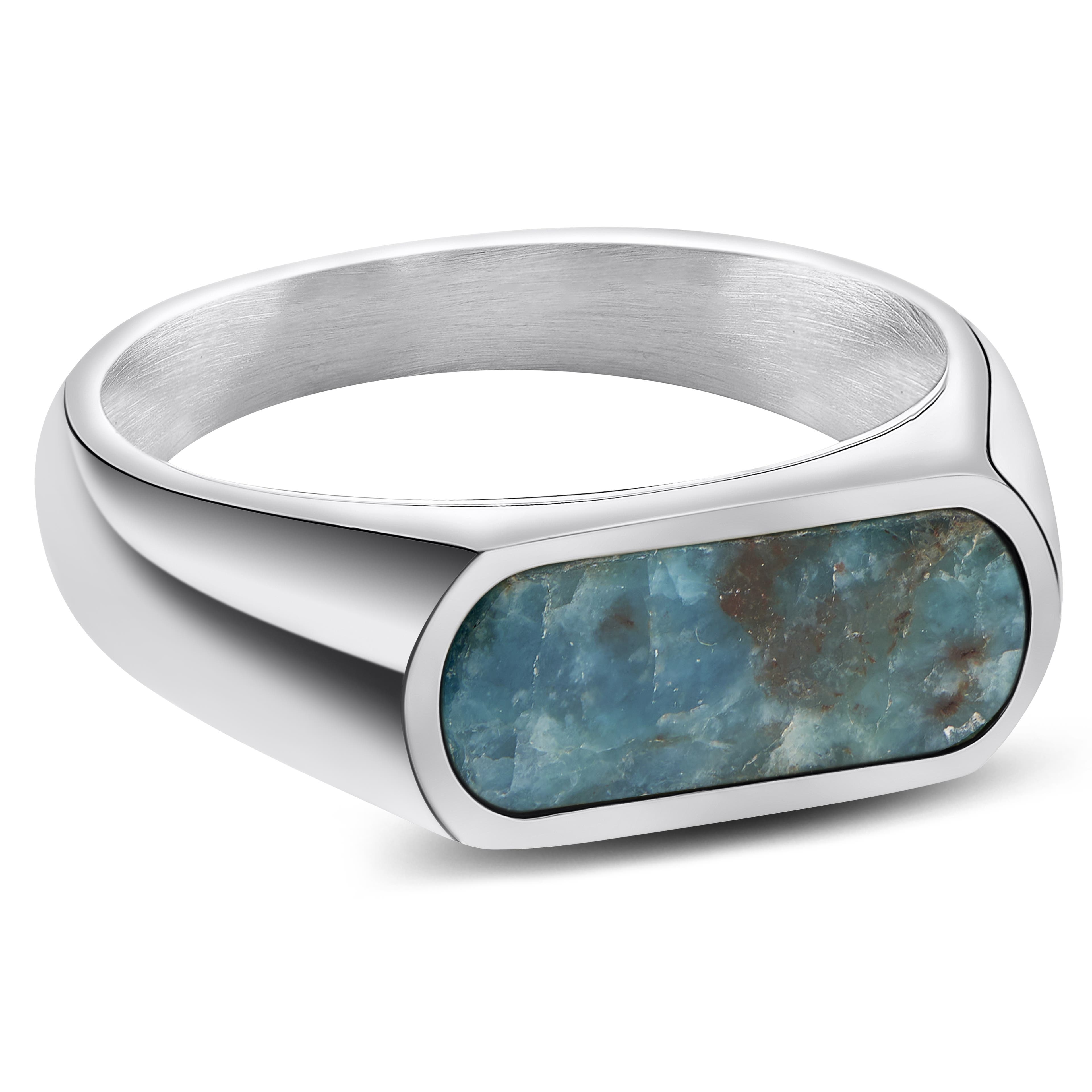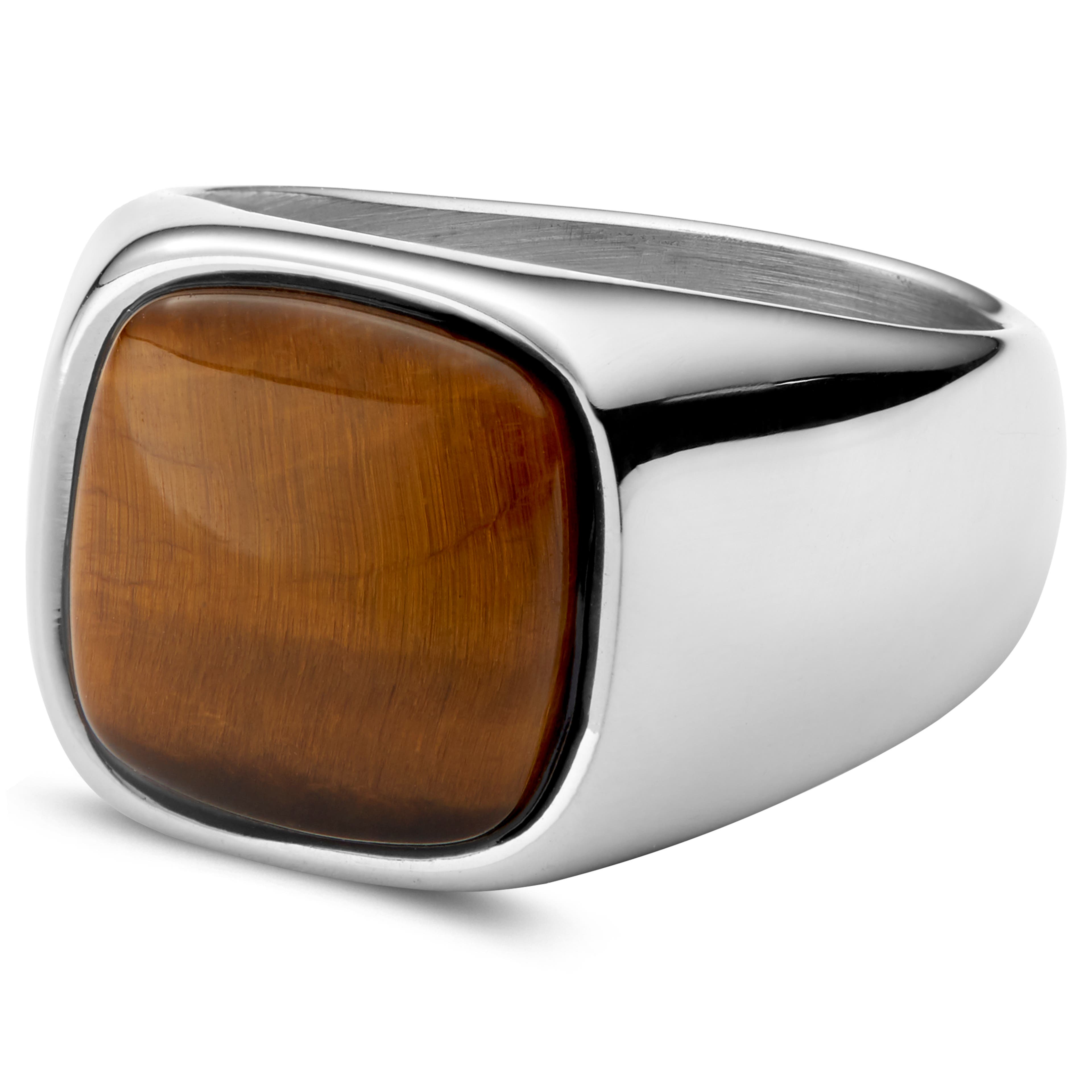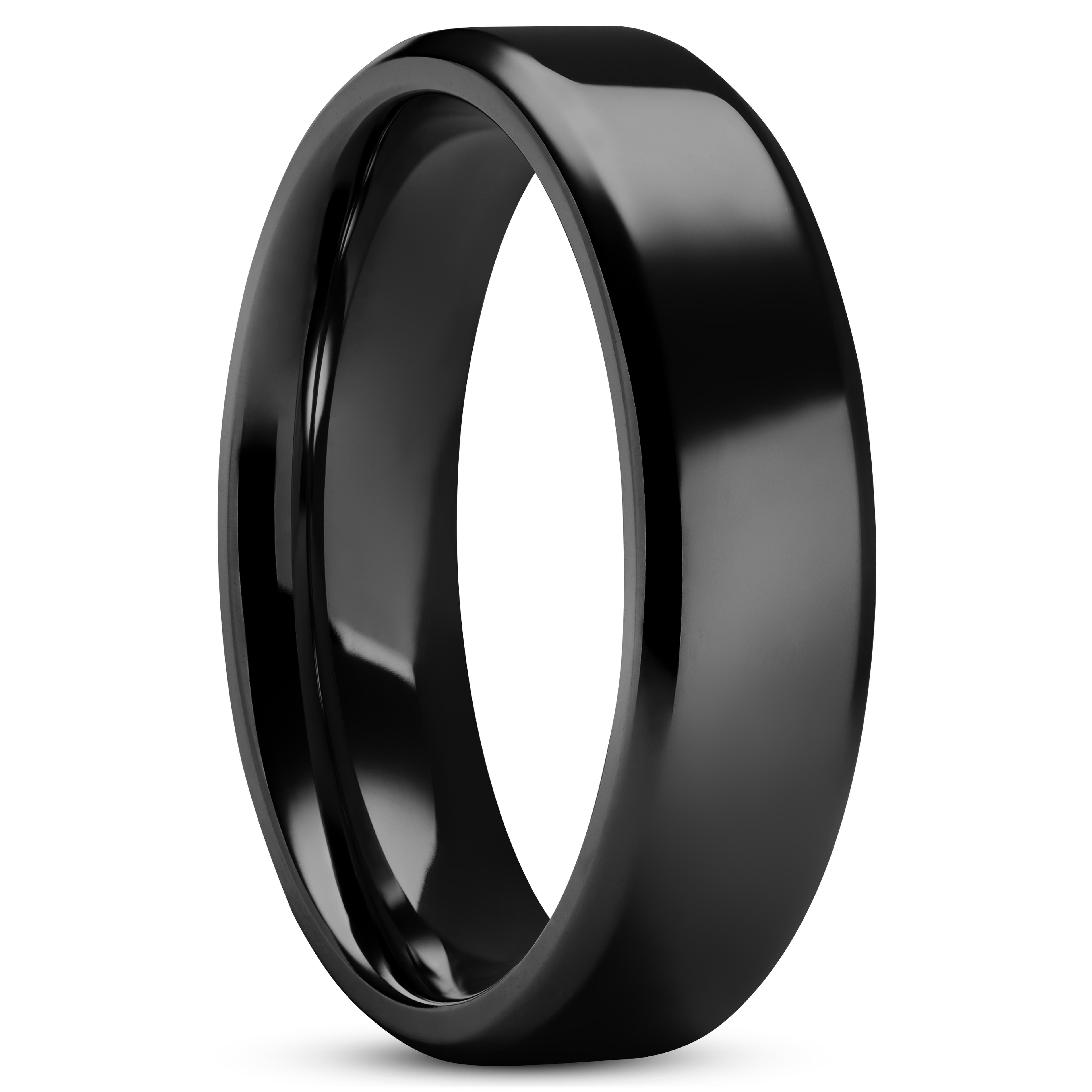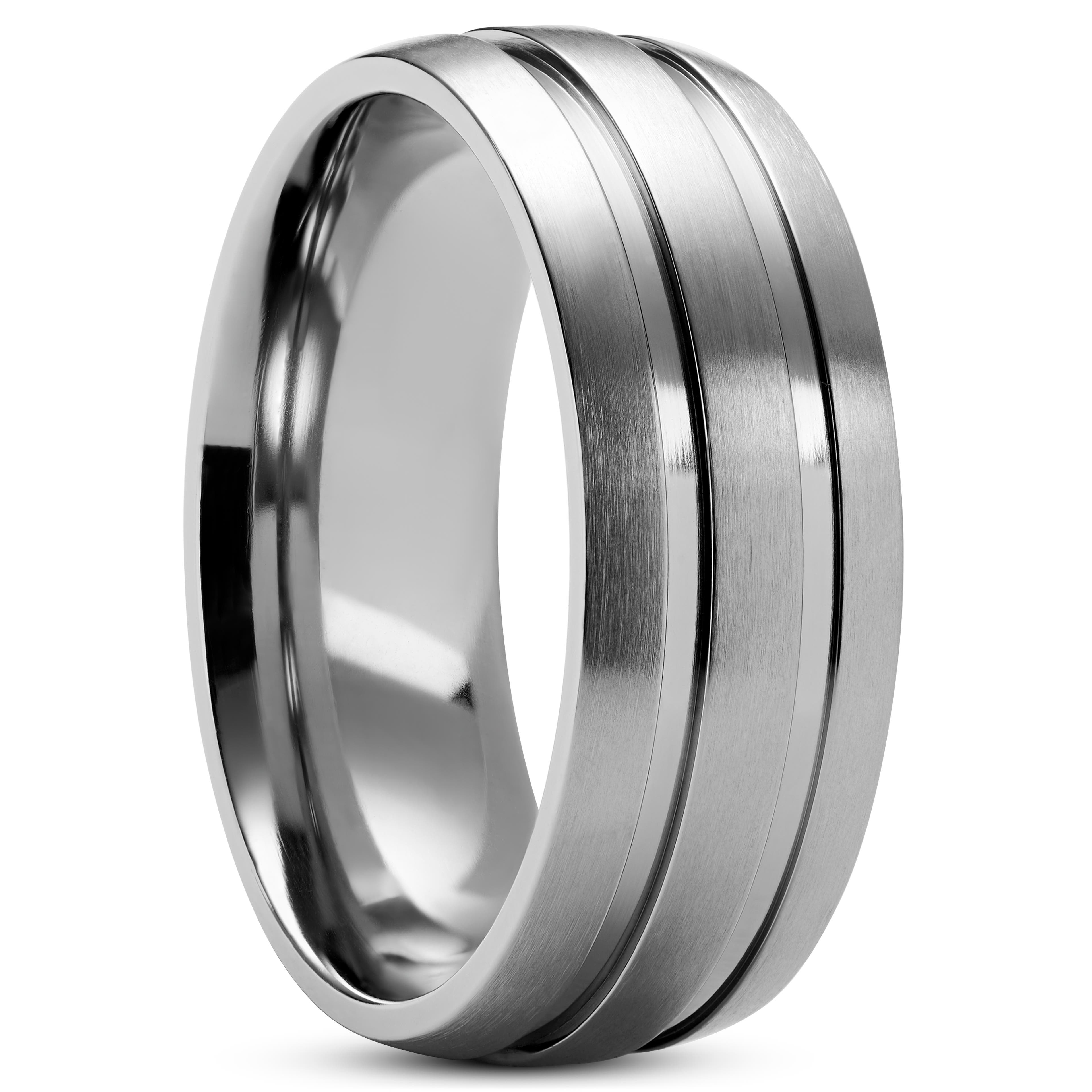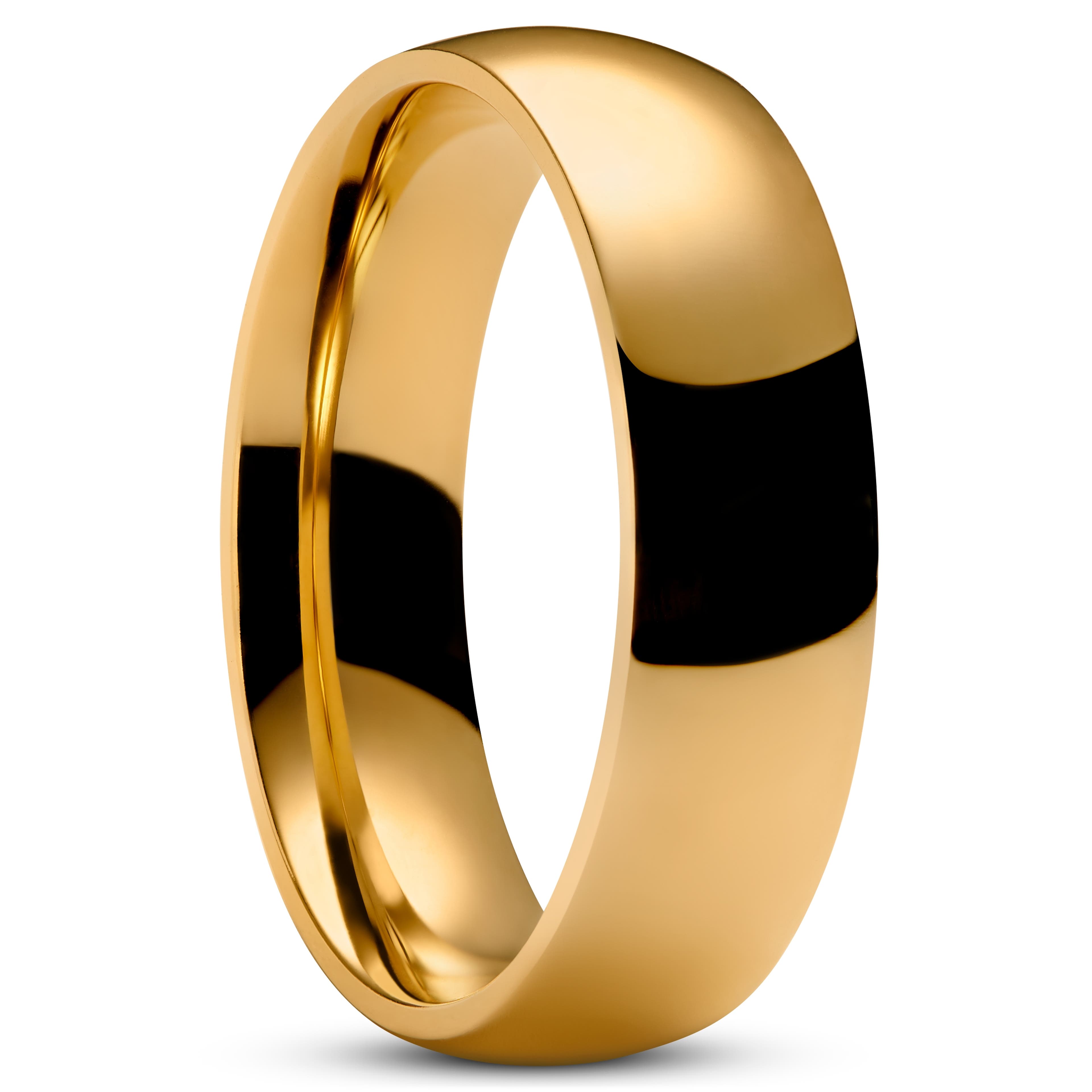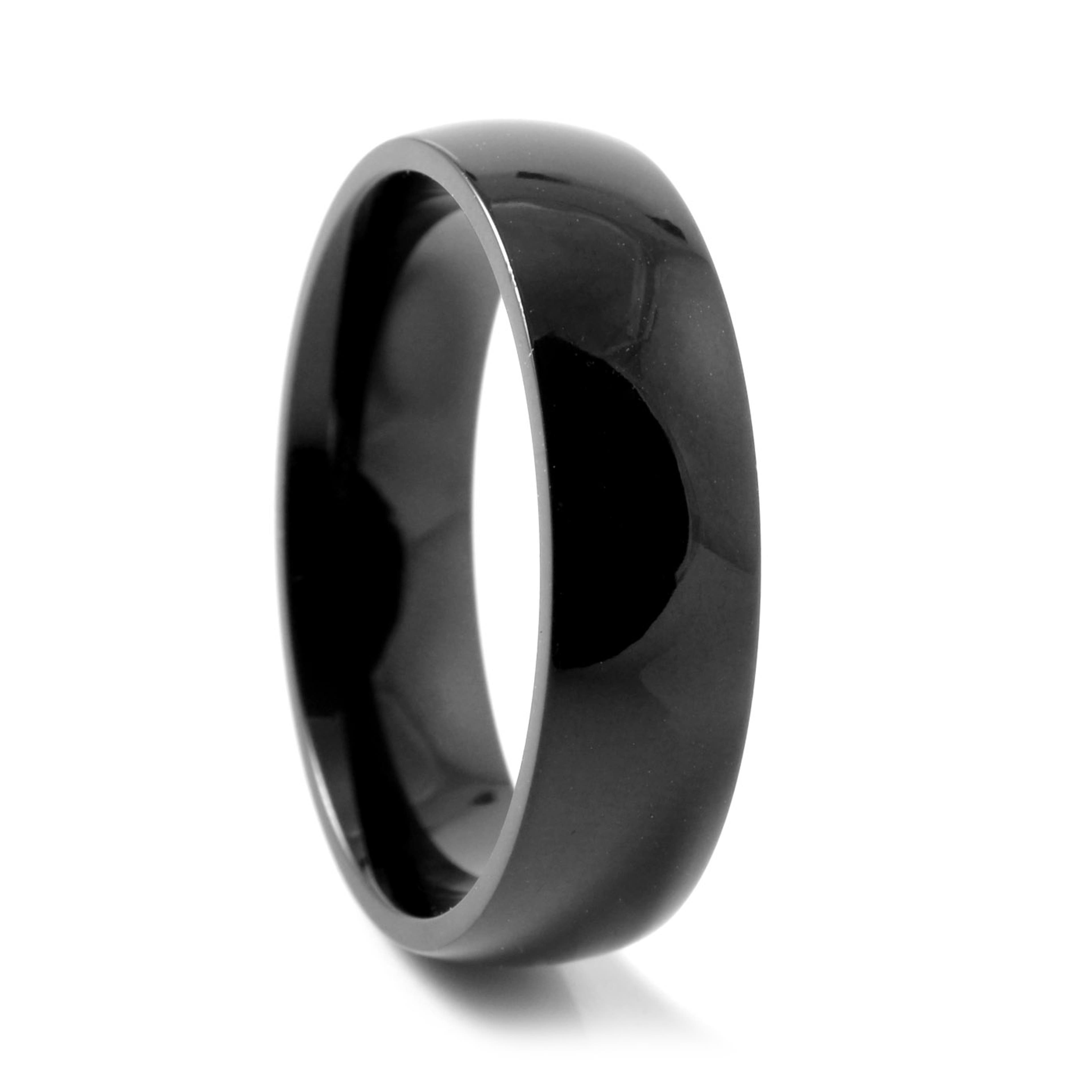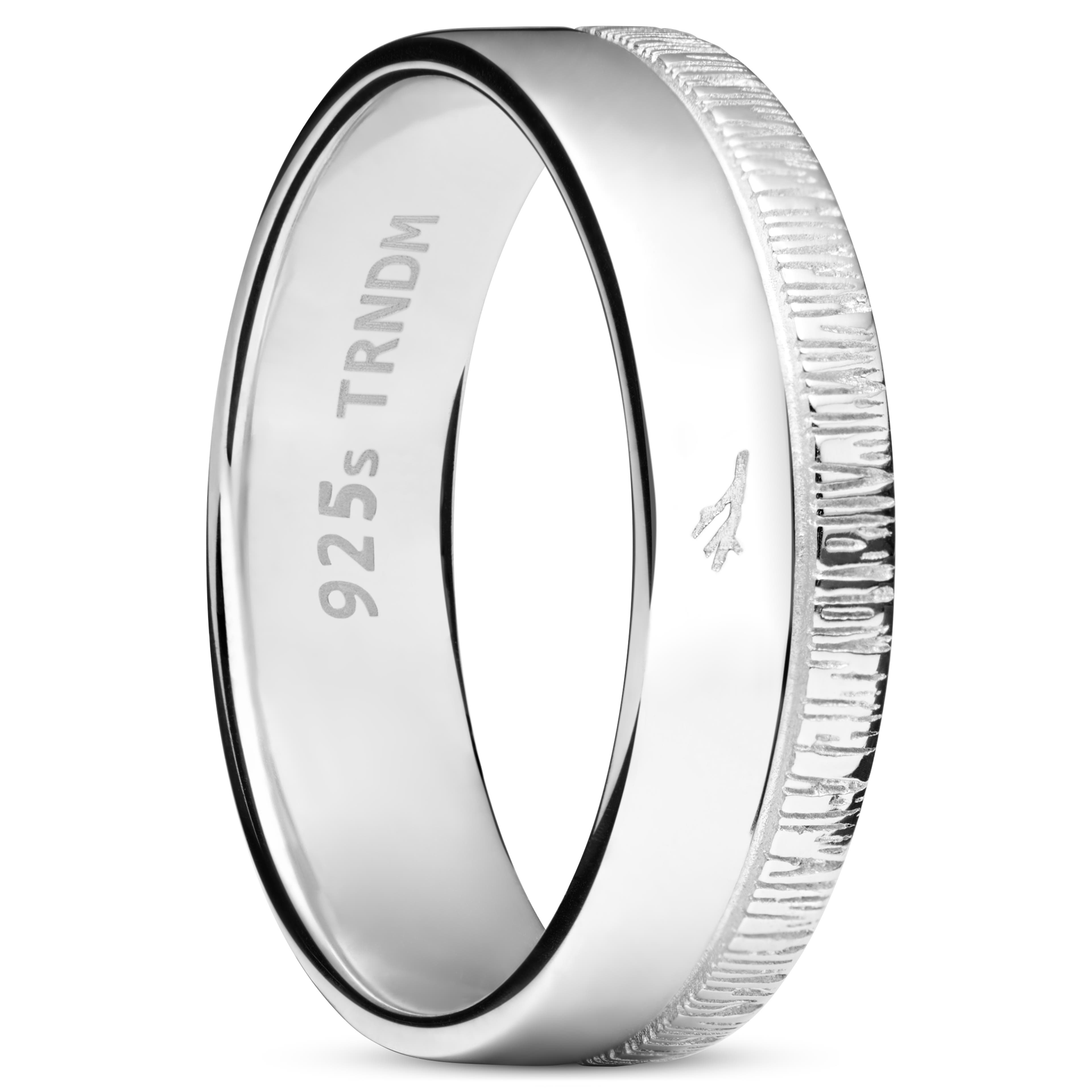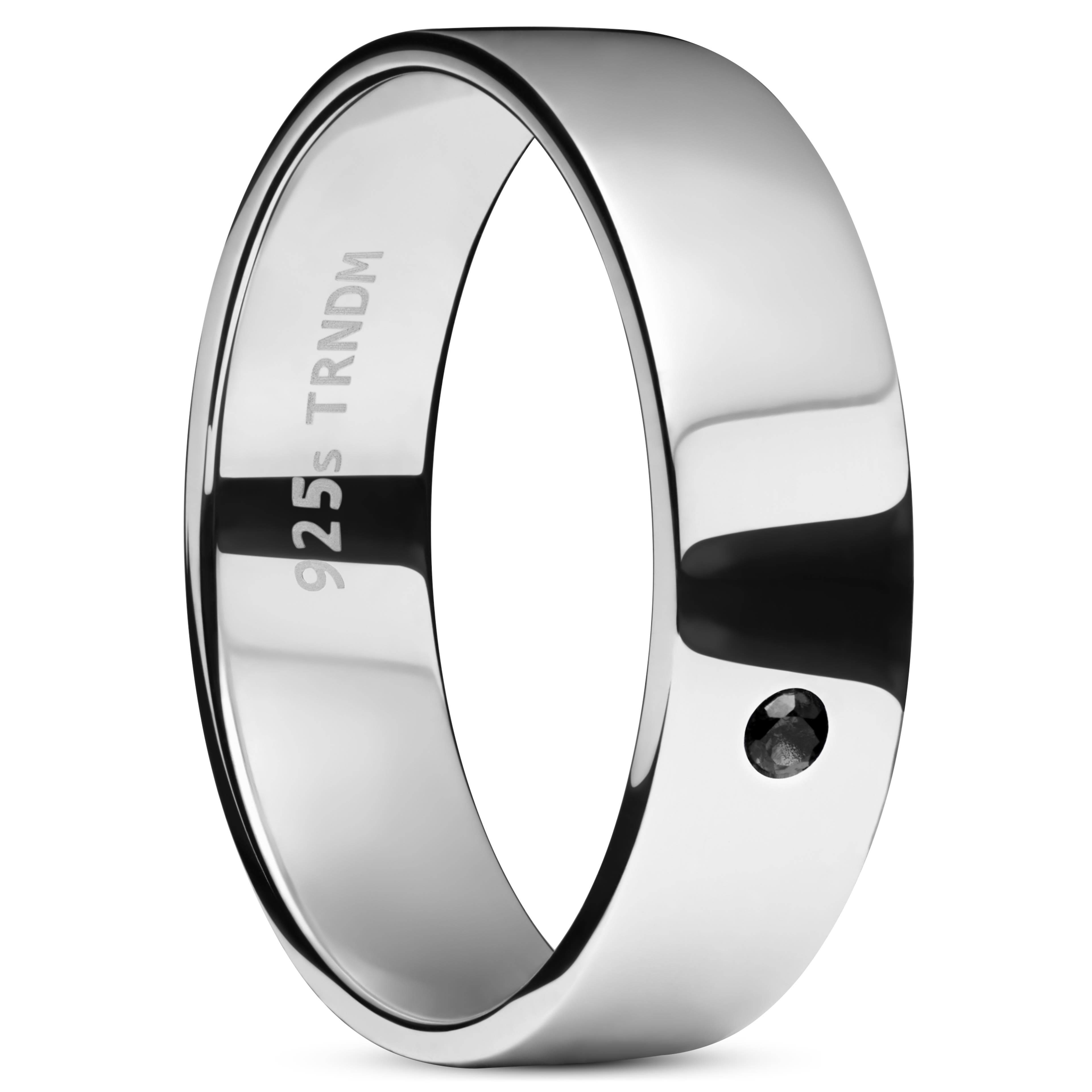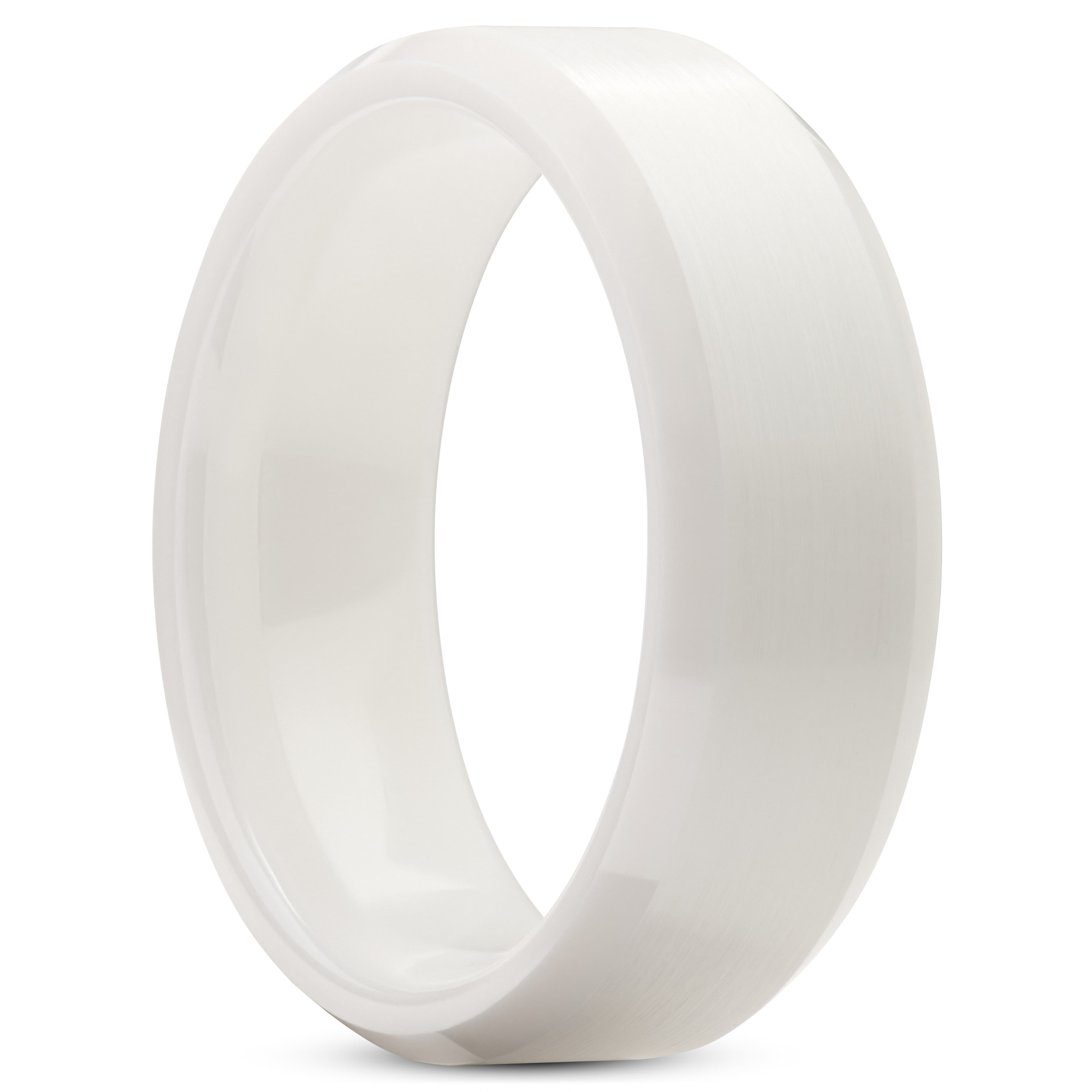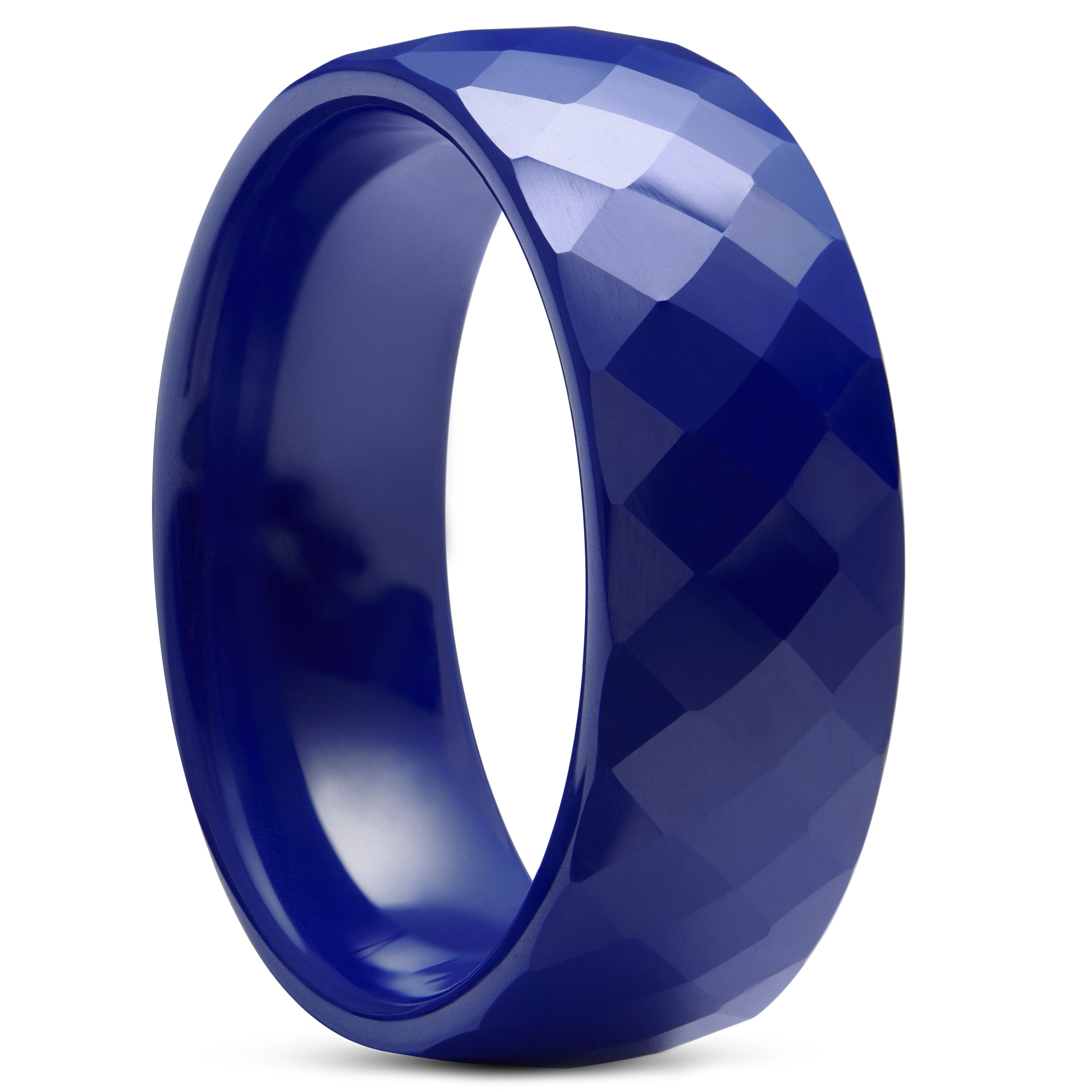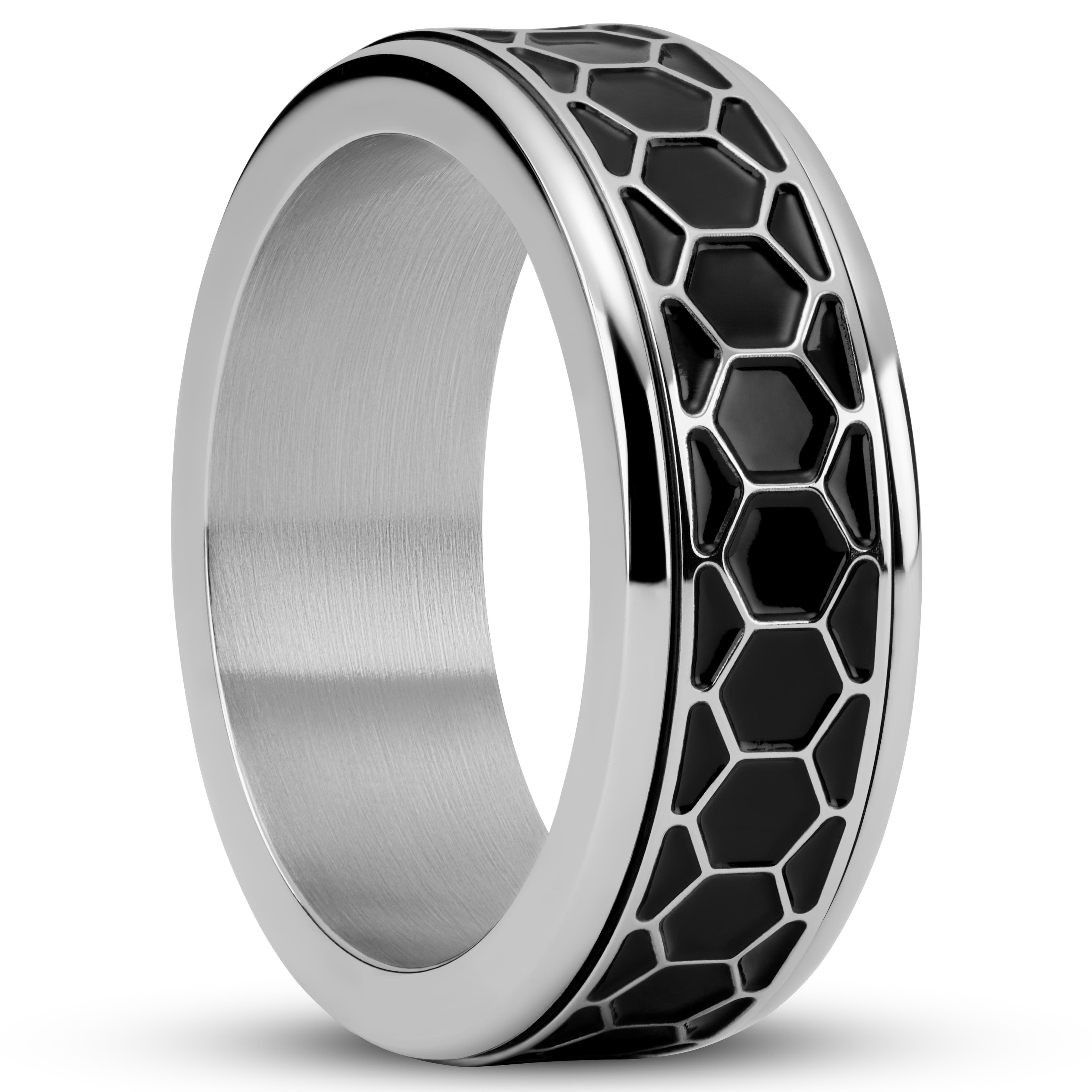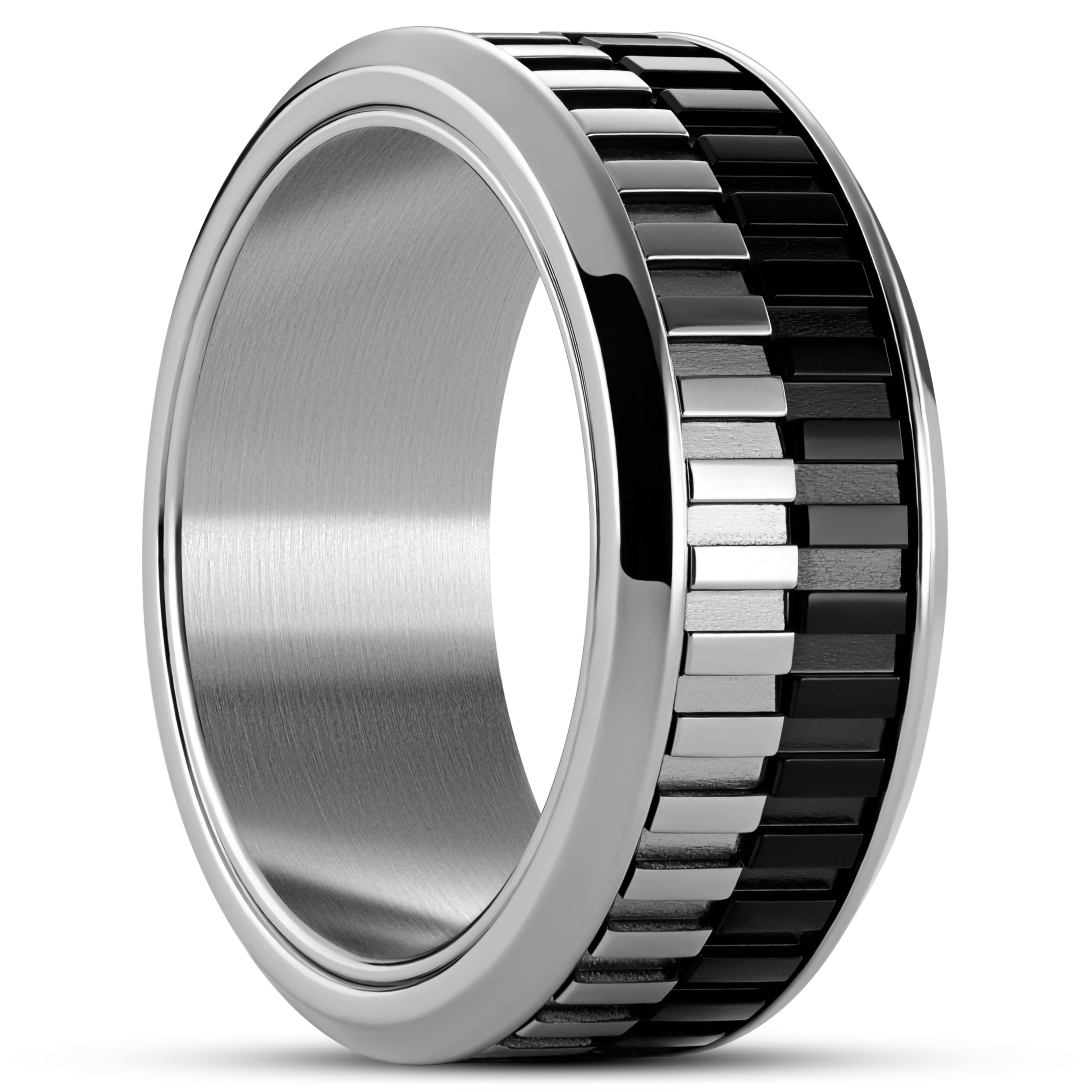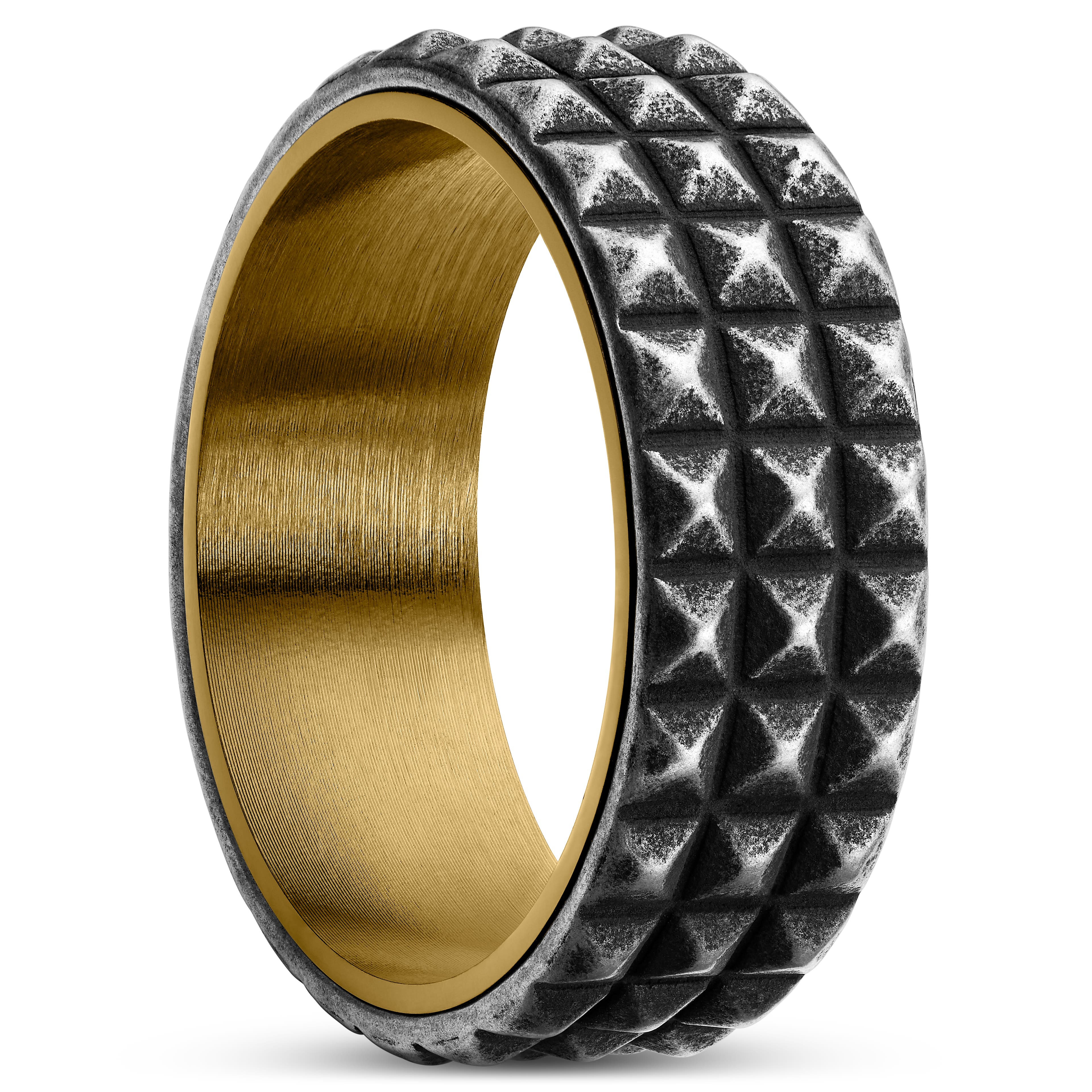Men's Rings - Your Ultimate Guide
Learn everything there is to know about rings for men. From materials to finding the right size, and everything in between. All in 20 minutes.
From ancient history to the present day, men have worn rings to signify wealth, privilege, and their marital status. Even today, you’ll see men with college rings, society rings, and club rings which have a private meaning and one which is personal to them.
The benefits of wearing a ring
- A gold band on your ring finger makes it instantly obvious that you’re off the market, and hopefully, you’ll be able to enjoy a night out without unwanted advances.
- Stress toys are for kids. Real men can occupy their time and focus their attention with nothing more than the rings on their fingers.
- Rings naturally accessorise with what you’re wearing, and add an intangible je ne sais quoi to any outfit. A
gemstone ring in particular, can help to bring out colours. - Show your affiliation with a ring on your pinky. You can display your love of a football team, a college, or even a political party with an understated
signet ring. - Gold is expensive. If you’re committed to showing off your good fortune to the world, there’s no better way than by sporting a fistful of bling.
Which finger should men wear a ring on?
You’re free to wear a ring on whatever finger you choose. There are no rules or laws (in the UK at least) which regulate what you can put on your fingers.
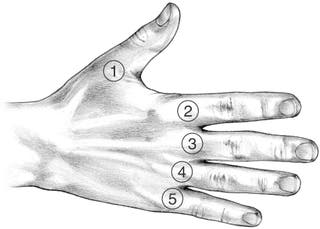
That being said, there are still certain expectations. There are traditional norms and mores - some of which have survived to modern times, and some which have been discarded in the wheelie bin of history.
1: Thumb rings
Thumb rings are still fairly unusual in the UK, although they are growing in popularity. If you’re already wearing two rings on one hand, your thumb can be the best place to wear another if you don’t want your digits to feel overcrowded.
2: Index finger rings
It’s for pointing at things. Long ago, certain very highly placed people would use their index finger for a signet ring bearing their family crest, however, it’s now even less common than a signet ring on the pinky. If you really want your ring to be noticed, wear it on your index finger and spend some time pointing at things.
3: Middle finger rings
The middle finger doesn’t come with any historical baggage, so there’s no need to worry about people thinking you’re either married or an anachronistic scribe, and you can wear whatever type of ring you choose. However, a bulky ring on what is already your largest finger may interfere with your index and ring fingers.
4: Ring finger rings

As the name suggests, this is the finger on which men are expected to wear a ring. Specifically, a wedding ring if on the left hand. There are no regulations stating that you have to. You can wear a wedding ring on whatever finger you choose, or not wear one at all, but if you’re wearing a ring on this finger, most people will assume that you’re married.
5: Pinky finger rings

Historically, this finger was reserved for signet rings, used to sign legal and official documents by pressing the ring face into hot wax, creating a seal. However that has fallen out of use since the advent of the ballpoint pen and self sealing envelopes. For the last hundred or so years, the pinky finger has been home to college rings and club rings. Usually with an ornate pattern, coat of arms or seal, but not always.
Types Of Rings For Men
Signet rings
Men's signet rings are old school cool. As the name suggests, signet rings should have some sort of sign or symbol on them. Usually, this will be a coat of arms or the motif of a club or college. But there’s nothing stopping you from having the badge of your favourite football team embossed on a signet ring, or even making up your own design.
Signet rings are usually made of gold, and can be worn on the pinky finger of either hand, or less commonly, on the index finger.
Wedding rings
Usually worn on the ring finger of the left hand, men’s wedding rings are usually gold or silver, with a simple unadorned design.

Other metals such as platinum or tungsten are starting to become popular, and it isn’t completely unheard of for men to wear diamond wedding rings.
Pinky Rings
A pinky ring is any ring worn on the smallest finger of either hand. Usually signet rings, but they don’t need to be.
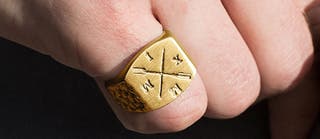
They’re small, and they don’t get in the way of whatever you’re doing. Men’s pinky rings can be made from any material, from gold to plastic, or even be leather rings.
Thumb Rings
As we mentioned earlier, your thumb is a great place to wear a ring if you don’t want your hand to feel overburdened by an excess of jewellery.
There’s loads of space, and men’s thumb rings can be as large and flashy as you want them to be, and especially skull rings have become popular lately. With ring materials ranging from stainless steel to tanzanite, wearing a ring on your thumb is guaranteed to get you noticed.
Materials Used in Men's Rings
Choosing a material for the band of your ring is as important as deciding which finger to wear it on. After all it’s going to be next to your skin, so you don’t want something which will be uncomfortable, cause a reaction, or deform easily when it’s banged against a hard object.
Gold rings
Pure gold is an instantly recognisable orange-ish tone and is the traditional material for wedding bands. It’s also one of the easiest metals to work and was probably the first metal ever used to make jewellery.
When buying a ring, it’s unlikely that you’ll end up with a pure gold example (24 karat), and it’s unlikely you’d want one either. Pure gold is soft, easily deformed, and expensive. Most high quality gold rings are 18 karat - meaning that 18/24 or three quarters of the alloy is gold.
- Pro: Timeless and classic
- Pro: Instantly recognisable
- Pro: Doesn’t tarnish
- Con: Pure gold is very soft and easily damaged
- Con: Gold alloys may contain metals which react poorly with your skin
- Con: Expensive
Men's white gold rings
White gold is an alloy, which means that pure gold has been smelted with another metal to create a new material. There’s no industry standard definition, and when buying a white gold ring, you’ll most likely be getting an alloy of gold with either silver, copper, platinum, or nickel. Many white gold rings are then plated with rhodium to give them a bright white finish.
Apart from the attractiveness of the colour, white gold rings are custom made to change the physical properties of the metal. Pure gold is soft and can be easily squashed. White gold made with a nickel alloy is both hard and strong.
- Pro: Looks good with any gem colour
- Pro: Doesn’t tarnish
- Con: Nickel is likely to be present in the alloy, making it unsuitable for allergy sufferers
- Con: Rhodium plating may wear away over time

Platinum rings for men
More valuable than gold, platinum is a rare dense metal, usually mined in South Africa, and only a meagre 160 tonnes is pulled from the earth annually. In addition to its rarity value, platinum makes an ideal material for men’s rings because it is tough and durable in a way that gold can never be.
If you want a gemstone set into your ring, platinum will hold it better and be less prone to breakages than its yellow counterpart.
- Pro: Strong, tough, and durable
- Pro: Excellent for holding gemstones in place
- Pro: Hypoallergenic, so good for sensitive skin
- Con: Expensive
- Con: Very dense, so very heavy
Titanium rings for men
Titanium’s greatest advantage, apart from its stunning lustrous, silvery appearance, is its strength to weight ratio. It has all the strength of steel, yet weighs practically nothing.
A ring made of titanium will weigh around a fifth of the same sized ring made from platinum, and around a quarter of one fashioned from gold. If you need your rings to look great, but don’t want to give your hand for a workout, titanium is the metal to choose.
- Pro: Light weight
- Pro: Strong
- Pro: Recyclable
- Con: Expensive
- Con: So light you may forget you’re wearing a ring
Sterling silver rings for men
Classic and timeless. Silver has been used for making rings for at least 4,500 years, and when first introduced to ancient Egypt, was more valuable than gold. Silver rings are simple, beautiful, and comparatively inexpensive.
Most silver used to make rings is what is called 925 silver or sterling silver. This means that 92.5% of the metal is actual silver with the remainder made up of copper. Unlike fine silver, which is soft and malleable, the addition of copper makes sterling silver hard and tough - although somewhat prone to tarnishing.
- Pro: Strong
- Pro: Considerably less expensive than gold
- Pro: Beautiful colour and shine
- Con: Prone to tarnishing
- Con: Metal used in 925 silver may cause a reaction in people with a copper allergy
Marcasite
Marcasite rings aren’t actually made from the mineral marcasite - they’re actually made from pieces of its close cousin, iron pyrite, better known as fool’s gold, set into silver.
Marcasite rings were very popular during the late Victorian era as an understated alternative to gold, and are often paired with a black gemstone such as onyx.
- Pro: Very inexpensive
- Pro: Chunks of pyrite give it a very sparkly appearance
- Con: Easily breakable and very difficult to repair
- Con: You’ll feel silly explaining your ring is fool’s gold
Tungsten and tungsten carbide rings
Tungsten is the hardest, strongest metal found on earth. Possibly in the entire universe. It’s a metal as tough as you are, and makes the perfect ring if you want something which is as close to unbreakable as you can get. Having said that, tungsten rings do scratch, and so won’t stay shiny as they continue their indestructible journey into eternity.
By contrast, tungsten carbide can be even harder than pure tungsten, and won’t scratch, ensuring that your ring keeps its lustre long after you’re gone. One important property to note is that because of their extreme hardness and strength, tungsten rings cannot be resized. So make sure you buy one which fits perfectly, and try not to put on too much weight.
- Pro: Both tungsten and tungsten carbide are hypoallergenic
- Pro: Practically indestructible
- Pro: Tungsten carbide rings will stay shiny forever
- Pro: Inexpensive
- Con: Can’t be resized
- Con: Difficult to cut off in an emergency
- Con: Carbide version will break and not bend with high impact contact with hard surface
Ceramic rings
Ceramic rings can be made from fired clay, but are more often formed from high-tech ceramics such as tungsten carbide and titanium carbide. They’re incredibly heat-resistant and hard, and unlike the ceramic used to make your favourite vase, these rings are shatter resistant.
Containing none of the materials known to cause allergic reactions, men’s ceramic rings come in a variety of colours, patterns and surface textures. They are also fairly inexpensive.
- Pro: Can be cast with beautiful, intricate designs
- Pro: Inexpensive
- Pro: Hypoallergenic
- Pro: Scratch and dent resistant
- Pro: Lightweight
- Con: Cannot be resized
- Con: Will break and not bend with high impact contact with hard surface
Wooden rings
Nature is all around us, and it can be on your finger too. Wooden rings are eco-friendly and are usually made by bespoke jewelers from hardwoods or reclaimed materials such as railway sleepers.
Wooden rings are hypoallergenic - meaning that they don’t contain materials likely to irritate your skin or cause a reaction. They are also very lightweight, and as an added bonus to the ecophile, are biodegradable too.
- Pro: Environmentally sound
- Pro: Hypoallergenic
- Pro: Light weight
- Pro: Inexpensive
- Con: Can be damaged by water and other chemicals
- Con: Requires special care to stay in good condition
Silicone rings
Silicone rings are smooth, light, and come in any colour, shape, or texture you could want or imagine. They’re tough, and can withstand temperatures of between -50 ºC and +500 ºC, without losing their properties.
Silicone is a flexible material, so deformation or breaking due to impact won’t be an issue. One disadvantage to silicone rings is that they can’t be relied on to hold a stone.
- Pro: Resilient
- Pro: Flexible
- Pro: Cheap
- Con: Cannot hold a stone in place
- Con: Doesn’t ‘feel’ like jewellery
Zamak Rings
While it may sound like something from another planet, Zamak is actually just a galvanized zinc alloy. It includes aluminium, magnesium, and copper and is otherwise known as “pot metal” or “white metal”. This alloy’s unusual name is derived from the German abbreviations for the various included elements. It was first developed in the United States in the 1920s.

Zamak is nickel-free and hypoallergenic and can be cast in awesome rustic designs making it a great material for jewellery design.
- Pro: Hypoallergenic
- Pro: Inexpensive
- Pro: Has a vintage appeal
- Pro: Lightweight
- Con: Does not have a refined look
- Con: Can easily be damaged by the elements
Anxiety rings for men
Some of us are incessantly chewing gum. Others tap their fingers on the table or their foot on the ground. Yet others, like someone at Trendhim who’s currently writing about himself, drive their coworkers insane constantly clicking a pen. We can’t help it. Our mind wanders, and we do things without even noticing we’re doing them. It’s our subconscious way of convincing ourselves everything is fine. Normal is normal. Up isn’t down.
Fidget rings for men, or anxiety rings as they’re more commonly known, feature some element that makes them almost impossible to leave alone. Some are designed specifically with this in mind, but almost any ring can be an anxiety ring as long as you find it soothes your wandering mind.
The chain steel ring below is one of the rings that‘s designed to be played with. The chain inside is loose, meaning you can twist it freely as you think about how to solve global warming.
The second ring is both comfortably textured and flexible. The sensation of pressing the texture against your skin from different angles can be downright hypnotic. So can the feel of it sliding over your skin as you twist it.
The third, a trio of men’s rings, is impossible to leave alone. Putting them on reminds you of playing leapfrog as a kid. They slide over one another until they’re in place, which also means they shouldn’t ever get stuck. You’ll be sliding them up and down your finger constantly.
Some rings are not intended to be played with but feature a texture that’s extremely satisfying to touch. The last ring below is one of those rings. It features a knurled thumbscrew texture, which is an instant haptic signal to any man that it’s meant to be turned. Righty-tighty, lefty-loosey.
Need something to play with to help you relieve stress or to focus? A fidget ring might just be the right accessory to trigger that eureka moment.
Gemstones Used In Rings
Gemstones add a touch of class and character to any ring, as well as giving the wearer a range of colour options to accesorise with outfits, skin tone, and eye colour. Here are the most common stones found in men’s rings.
Diamonds are a man’s best friend
Clear, colourless, and with an ability to refract light which can illuminate a room, diamonds are supremely hard, and are the some of the most valuable gemstones in the world. Most diamonds contain small natural flaws or inclusions, while flawless ones are worth considerably more.
Ravishing Rubies
With a pinkish red hue, rubies are devastatingly beautiful and have been highly valued since Old Testament times. Nearly as hard as a diamond, rubies are a variety of crystalline aluminium oxides called corundum. The darker and more ‘blood-like’ a ruby appears, the more valuable it is. Rubies look best mounted on a rich yellow gold ring.
Stunning Sapphire
Structurally, sapphires are exactly the same variety of corundum as rubies, but with one important difference - they can’t be red. Although sapphires are usually blue, there’s no reason they cannot be green, orange, purple, or even black, as their colouring depends on the nature of impurities in the stone. A very rare variety called colour change sapphire, will actually alter its colouring depending on the type of light source. Sapphires are stunning when set in a lighter silver coloured ring.
Emerald
Emerald is a green gemstone which has been mined for more than 3,500 years. As with diamonds, most emeralds have flaws or inclusions which are visible to the naked eye, and finding an example without inclusions is extremely rare. Colours can vary from a pale, minty green to a dark verdant hue which is the most highly prized. Emeralds are not especially hard (as rocks go) and can be inscribed with writing to make your ring even more personal.
Amethyst
Amethyst is a purple or violet variety of quartz and was greatly prized by the ancient Greeks who believed that it prevented drunkenness and helped to prevent hangovers. In fact, the word ‘amethyst’ comes from the Greek for ‘not intoxicated’. Relatively inexpensive and very good-looking, an amethyst ring could be the perfect accessory for a night out on the town.
Aquamarine rings
Can you guess why aquamarine is called aquamarine? The clue is in the name. Aqua and marine. It’s a seawater colour. The delicate clear blue of the Mediterranean to be precise - not the murky brown of the Mersey Estuary. If you have blue eyes, a perfectly polished aquamarine on your finger will show them off beautifully.
Tanzanite rings for men
Tanzanite is a recently discovered rare blue or violet gemstone, with optical properties which change depending on the type of light source used to view it, and the viewing angle. Unlike diamonds, where flaws are commonly found even in the more expensive stones, almost all tanzanite is flawless. Mounted on a white gold, titanium, or platinum ring, you’ll find yourself waving your fingers around to catch the different hues.
Black diamond rings
Black diamond is a term for any normal white diamond which has too many inclusions (flaws) and imperfections to be genuinely beautiful jewellery. In natural black diamonds, many of these inclusions will be graphite clusters - giving them a natural black colouring. Treated black diamonds also use flawed white diamonds as a base material, but are exposed to radiation or heat treatment to induce the black colouration.
Onyx
Usually black when sold as jewellery, onyx is a warm stone with alternating colour bands. It is neither rare nor particularly expensive. Red varieties are more common, however a counterfeiting industry has existed since Roman times, where red onyx is dipped in a sugar solution then treated with acid to turn it black. Onyx looks fabulous when set in a silver or marcasite ring.
Turquoise
Is turquoise blue or green? Neither. It’s turquoise. Unlike most other precious stones found on jewellery, turquoise is completely opaque and does not have any refractive properties. With colours ranging from a bluish-green to a greenish-blue, turquoise is mined throughout the world and has been highly prized since antiquity.
Moissanite
Visually similar to a diamond and almost as hard, natural moissanite is insanely rare and is only found at the site of meteor impacts. Synthetic, lab grown moissanite started to appear on the gemstone market towards the end of the 20th century, and is an attractive, reasonably priced alternative to diamonds. Unlike diamonds, moissanite changes colour when heated.
Peridot
Peridot is an olive green gemstone often mistaken for emeralds and has been set as a decorative stone in rings since ancient Egyptian times when it was mined only on a small island in the Red Sea. Due to its chemical instability, peridot is usually riddled with flaws - meaning that most peridot gems are quite small.
Amber
Amber is not technically a gemstone, and does not have any fixed chemical formula. Nonetheless, it is one of the most eye-catching adornments you can find. Amber is formed from the pine tree sap over a centuries long fossilisation process. Unlike with other gems, inclusions are highly valued, and the presence of a long dead insect such as a mosquito even moreso. Most amber ranges in colour from light yellow to an orange red, however, blue and green amber is mined in the Caribbean.
Tiger’s Eye
A variety of quartz with a startling resemblance to fossilised wood, tiger’s eye is an ideal stone for less showy rings. It is usually an opaque dull brown colour, shot through with streaks of lighter or darker material.
Rings That Care For Your Skin
Sometimes your body hates you. Your normally placid immune system which stirs itself into lazy action to ward off the worst colds will go into overdrive when presented with a material which is completely harmless, causing bad physical reactions.
Occasionally these allergic reactions are due to metals commonly used as alloys in rings, such as cobalt, nickel, and chromium. So yes, if your ring causes your finger to start itching, it’s probably best if you take it off and never touch it again.
So what can you do if you have a penchant for finger jewellery, but suffer from contact dermatitis or an allergic reaction to these metals?
Allergy testing for the metals in your ring
Your first stop should be the GP’s surgery for an allergy test. If you don’t know what metals actually make up your ring, you’re better off getting tested for all of them. It’s quick, (moderately) painless, and the results are available instantly. When you find out what your skin is reacting to, simply avoid rings which contain that metal.
The most common metal people react to is nickel, and unfortunately, it is an ingredient in most ring alloys. If you have the option and the funds, go for a pure, unalloyed metal such as silver, 24 carat gold, or tungsten.
Alternative ring materials for sensitive skin
It may be that your skin doesn’t react well to any metals. It could be due to allergies or it may simply be because of the constant abrasion of having a hard-edged object constantly rubbing against you. Some people develop calluses. Some don’t. Here are some ring materials you could consider instead.
- Silicone
- Wood
- Ceramic
- Tungsten
How to Clean Your Ring
To enjoy your rings for a lifetime, you have to clean and store them properly. The easiest way to clean them is to use the professional services of a qualified jeweller. If you prefer to get the job done yourself, all you need for metal items with no stones is water, a mild detergent, a soft-bristled toothbrush, and a cotton cloth to dry.
A soft jewellery polishing cloth is also an inexpensive and effective way to remove light tarnishing. If your rings have gemstones, keep the moisture to a minimum and use no abrasives to prevent scratches. Cotton swabs immersed in hydrogen peroxide will make the jewellery shine again. Wood shouldn't get wet. In general, jewellery shouldn't come in contact with harsh chemicals or chlorinated water because it can severely damage and discolour the metal as well as loosen the stones.
Your Party Chatter Version Of Men's Ring's History
- Ancient Egyptians believed a vein connected the ring finger to the heart.
- The Pope’s signet ring was made in the 13th century and is called ‘The Ring Of The Fisherman.’ It was used to sign official correspondence until 1842.
- In ancient Rome, only the well-to-do patrician class were allowed to wear gold rings. Plebs had to make do with iron.
- The most expensive ring in the world is ‘The Pink Star’ - which boasts an impressive 59.60-carat pink diamond. It sold for £57.3 million in 2017.
- Wearing multiple rings on each hand only became fashionable in Europe during the late middle ages.
- In the Renaissance period, rings with secret compartments were occasionally used to hide documents.
- English monarchs traditionally wore a special coronation ring, signifying that they were spiritually wed to the country.
- It is possible to have your mortal remains treated and compressed into a diamond, then mounted on a ring. A poignant memento for your grieving loved ones.
- The world’s heaviest ring is the Najmat Taiba - weighing in at over 60 kg, and adorned with 5kg of precious gems.
- Possession of the ‘One Ring’ will enable you to turn invisible at will, but may affect your judgement.
You Asked – We Answered
I’m an electrician and need a non-conductive ring. What are my options?
You’ll want to stay clear of any metal ring materials such as gold or silver. Rings made of wood, silicone, or ceramic will look fantastic, and won’t conduct electricity either.
What is the most durable metal for rings?
The hardest, toughest metal for rings is tungsten carbide. It’s superbly strong, and scratch resistant too.
How long do you wait to get a promise ring?
Promise rings aren’t engagement rings and simply serve as a reminder of a promise you made someone. This can be to love them until you die, or that you will always buy a gallon of milk on the way home from work. The wait time depends on the seriousness of the commitment you’re making and is entirely up to you.
What is the maximum number of rings a guy should wear?
There’s no set answer to this. Again, it’s down to your own personal style and the impression you want to make. If you’re going for a show of conspicuous wealth, you can’t go wrong with an entire fistful of bling, however, in most instances, we wouldn’t recommend more than three per hand.
Why do we wear wedding rings on the left hand?
The ancient Egyptians believed that there was a vein running from the left ring finger to the heart. They passed this belief onto the Romans who dubbed this blood vessel the ‘Vena Amoris’ (vein of love).
Should men wear engagement rings?
It’s up to you. You’re not married yet, but you’re certainly off the market. An engagement ring helps to advertise this fact and helps deter unwanted advances.
Is it true that your ring size is the same as your shoe size?
No.
Why are tungsten rings so cheap?
They’re not. Or at least, they shouldn’t be. As with everything, you get what you pay for. If a tungsten ring is ridiculously low-priced, it’s likely to have been made with low-quality materials, no quality control, and alloyed heavily with poorer materials.
How is a ring supposed to fit?
Comfortably. Loose enough so you can twist it around a finger without discomfort, but not so loose that it moves on its own.
Is it better to have a ring sized up or down?
It is considerably easier for a jeweler to shrink a ring than to make it larger.
What can you have engraved on men's rings?
Anything which will fit. The names of your children. A promise to love, honour, and obey. A vow to kill the man who killed your father. The lyrics to your favourite Right Said Fred track. Practically speaking, your only limit is the characters.
Are there any good rings for guys who hate wearing rings?
Try something super light and very thin, so that you don’t notice any extra bulk or weight. Titanium is a good choice.
Is it appropriate to wear my former wedding band as a signet ring on my other hand?
Wow. It depends on the circumstances. If you’re widowed then it’s a lovely memento. If you’re widowed because you killed your spouse, then no. That’s just creepy. Wearing a wedding ring as a signet ring after a divorce probably means you haven’t moved on yet.
On which finger can I wear a fraternal ring?
Fraternal rings indicate that you belong to a brotherhood or other shadowy organization. Traditionally, they are worn on the pinky finger or less commonly, on the index finger.
How much should I spend on a wedding ring?
If it’s for yourself, then however much you feel comfortable with. Make sure you buy a ring you like and can conceivably live with for the rest of your life. It doesn’t need to be expensive.












